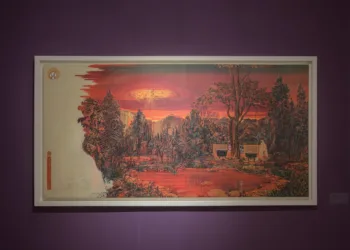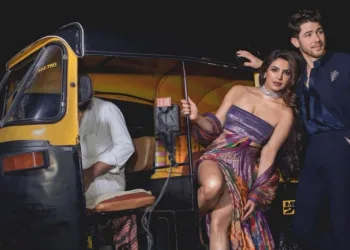The Elephant Whisperers, engaging, charming and underlining the human-animal bond, is the latest in a long line of Indian documentaries that have garnered global attention
BY SUDHEER GUPTA
It has to be acknowledged finally that documentary films made in India have had a great tradition since the 1940s, that they have been winning hearts and minds all over the world for more than 70 years, and that while they have continuously made India proud, our fiction feature films in contrast have hardly ever won laurels, and when they have it’s been few and far between. In 2023, India’s big win has been Kartiki Gonsalves’s The Elephant Whisperers getting the Oscar for Best Documentary Short. Another documentary, All That Breathes by Shaunak Sen, which was also nominated for the Oscar in its category caught equal international attention. Do I need to rub it in — all this has happened while no Indian fiction film was even discussed, only RRR’s song, “Naatu, Naatu”, got the Oscar for the Best Original Song.
The Elephant Whisperers is a love story of a tribal couple, Bomman and Bellie, who come together to look after and care for two orphaned elephant calves, Raghu and Ammu, like their own children. They are the first couple in South India to have raised and saved two orphaned elephant calves. They marry in front of their elephant children. They are from the tribe of Kattunayakan, the Kings of Forests, not afraid of elephants but rather their traditional caretakers, considering them equal partners in the natural scheme of things in the lush green Mudumalai Tiger Reserve in the Nilgiris of Tamil Nadu.
Bomman, a mahout, and Bellie work at the Theppakadu Elephant Camp. They are given an injured two-year-old elephant calf, Raghu, to take care of. They save him, healing his wounds and making him grow healthy. Raghu lives with them happily as their son, eats from their hands, plays football to their great joy, sleeps with them in the open, and frolics in streams when given a bath and rub by Bomman. Raghu’s antics are a heart-stealer. Time passes, seasons change, Bomman and Bellie get closer to each other.
Then the Forest Department gives the couple Baby Ammu, an orphaned female elephant calf, to take care of as well. Bomman brings her home. Bellie and Raghu grow close to her. And the family of four has a great time roaming the forests, playing with one another. Then Bomman and Bellie marry in front of their community and their two elephant children. But soon after, the Forest Department decides to take Raghu away and hand him over to another caretaker. Bomman prays to all the gods, appeals to the department and when nothing succeeds he has to let the Forest Department take Raghu away. Ammu, who had grown quite attached to Raghu, is traumatised. Later, whenever Bomman comes across Raghu, the elephant runs up to him — showing the strength of the bond. It’s a family that only speaks and understands the language of love. Their trauma at separation tugs at the viewer’s heart-strings.
At this point the dexterous filmmaker expands the story to the personal views of Bomman and Bellie Kattunayakan about man-elephant relations, the importance of forests for the tribal population of the region, the emotional bonds and similarities between elephants and humans, and the need for more care of orphaned and injured elephants. Conveying the bond of love between humans and elephants is the big achievement of the filmmaker. “Without our elephants we are nothing.”
The original version must be having the narration of Bomman and Bellie in their voices and Tamil language with subtitles in English, which I would have definitely preferred. But the version streaming on Netflix — the Hindi version with the narration by a male and a female voice-artiste — is totally unconvincing. I do not understand why Netflix had to do this. Possibly they still don’t understand that Indians have been watching Indian documentaries in various Indian languages, subtitled in English, for more than 30 years. That this has been an excellent way for Indian film audiences to be able to hear other Indian languages than their own mother tongue. Letting the characters speak in their language adds to the authenticity of the documentary film.
Maybe the Netflix algorithm prompted the Hindi version, since Netflix is biased towards Hindi due to its mistake of considering Bollywood as representative of Indian cinema. Well, so much to learn for Netflix!
I congratulate the entire team of The Elephant Whisperers, I mean the cinematographers, sound recordists and editors, the visual colourists, the musicians, the track re-recordists and mixers, as well as the production team for making a beautiful documentary film. A film becomes beautiful only when the entire team delivers its best. The story credit is given to Kartiki’s mother, Priscilla Gonsalves, who has told the story in a simple and spontaneous fashion, after beginning the film traditionally with lighting of a diya and a prayer to the elephant god, Ganesha. The easy-going storytelling is this film’s strong point. It makes the story so believable and real! It would be great if this film and the Oscar help to achieve better care of elephants and so many other living creatures who are part of our environment. High time we understood that tribal people of our land are not living in a time warp but in the reality of our present-day existence, only with different views and beliefs than the average urban Indian.
(The reviewer has been a documentary maker for 30-plus years. He is an alumnus of the Film & Television Institute of India and the Centre for Historical Studies, Jawaharlal Nehru University.)








